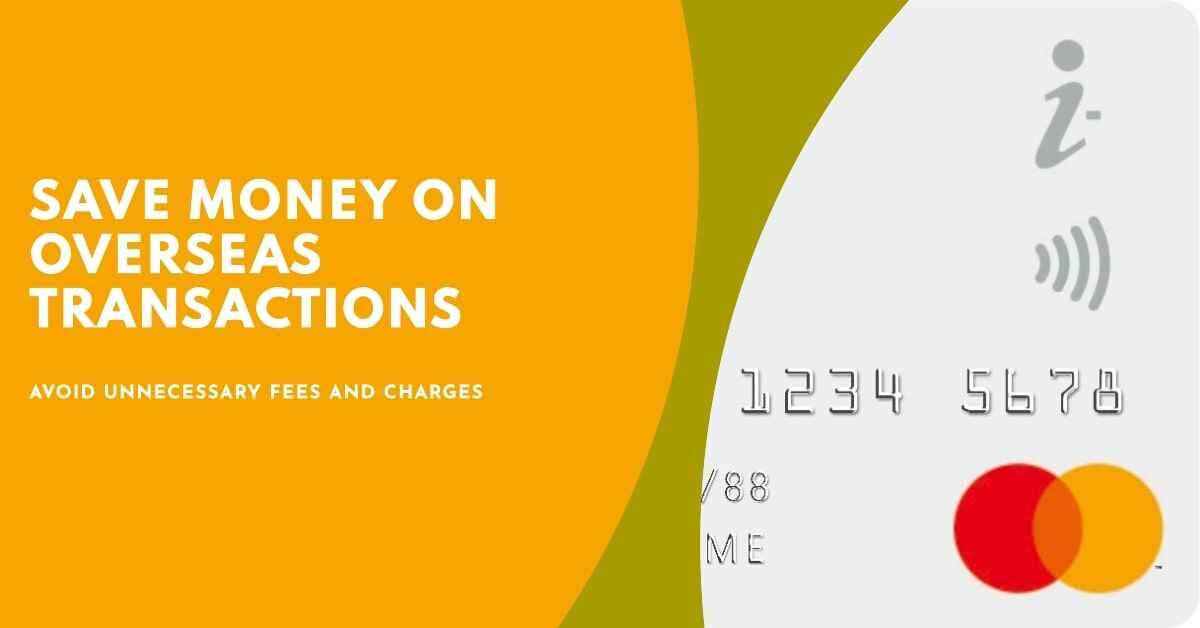
How to Avoid BEA Credit Card Overseas Transaction Fees
If you have a BEA credit card, you may be wondering what overseas transaction fees are and how they affect your spending. Overseas transaction fees are charges that your credit card issuer and network may apply when you make a purchase in a foreign currency or through a foreign bank. These fees can add up quickly and increase your expenses when you travel abroad or shop online from overseas merchants. In this article, we will explain what BEA credit card overseas transaction fees are, how they are calculated, and how you can avoid them with some tips and tricks. We will also answer some frequently asked questions about overseas transaction fees and BEA credit cards.
What are BEA credit card overseas transaction fees?
BEA credit card overseas transaction fees are fees that you may have to pay when you use your BEA credit card for transactions that involve a foreign currency or a foreign bank. These fees are composed of two parts:
- A currency conversion fee charged by the card network, such as Visa or Mastercard. Both charge 1% of the transaction amount.
- An additional fee charged by the card issuer, which is BEA in this case. This fee varies depending on the type of BEA credit card you have, but it is typically 1% or 2% of the transaction amount.
These two fees are usually combined into a single overseas transaction fee on your credit card statement, which can range from 2% to 3% of the transaction amount. For example, if you spend $100 at a restaurant in another country, you may have to pay an extra $2 to $3 as an overseas transaction fee.
How are BEA credit card overseas transaction fees calculated?
To calculate the overseas transaction fee for your BEA credit card, you need to multiply the purchase price after currency conversion by the overseas transaction fee rate. The currency conversion rate is determined by the card network, such as Visa or Mastercard, based on the market exchange rate at the time of the transaction. The overseas transaction fee rate is determined by the card network and the card issuer, which is BEA in this case.
For example, suppose you have a BEA credit card that charges a 3% overseas transaction fee and you buy something that costs €94.79 in France. The currency conversion rate is 1 euro = 1.06 US dollars, so the purchase price in US dollars is $100.47. The overseas transaction fee is 3% of $100.47, which is $3.01. The total amount you have to pay is $103.48.
How to avoid BEA credit card overseas transaction fees?
There are several ways to avoid or reduce BEA credit card overseas transaction fees when you travel or shop online from foreign merchants. Here are some tips and tricks to help you save money and avoid unnecessary charges:
- Use a BEA credit card that does not charge overseas transaction fees. Some BEA credit cards, such as the BEA Flyer World Mastercard, do not charge any overseas transaction fees for purchases made in foreign currencies or through foreign banks. This means that you can use these cards without worrying about extra fees when you travel or shop online from overseas merchants. However, these cards may have other fees or requirements, such as annual fees or minimum spending, so you should compare them carefully before applying for one.
- Use a BEA credit card that offers rewards or discounts for overseas spending. Some BEA credit cards, such as the BEA CENTENNIAL World Elite Mastercard, offer rewards or discounts for overseas spending, such as air miles, cash rebates, or merchant offers. These benefits can help you offset the overseas transaction fees or even earn more value from your spending. However, these cards may also have other fees or requirements, such as annual fees or minimum spending, so you should compare them carefully before applying for one.
- Use a BEA credit card that has a low overseas transaction fee rate. If you do not have a BEA credit card that does not charge overseas transaction fees or offers rewards or discounts for overseas spending, you can still use a BEA credit card that has a low overseas transaction fee rate. For example, the BEA CENTENNIAL World Elite Mastercard charges only 1% overseas transaction fee, which is lower than the average rate of 2% to 3%. However, this card also has a high annual fee of $695, so you should weigh the pros and cons before applying for one.
- Pay in local currency instead of US dollars. When you use your BEA credit card overseas or online from foreign merchants, you may be given the option to pay in US dollars or local currency. This is called dynamic currency conversion (DCC), and it is a service that lets you see how much you are paying in US dollars at the point of purchase. However, this service may also charge you an extra fee of 1% or more on top of the overseas transaction fee. To avoid this fee, you should always choose to pay in local currency instead of US dollars. This way, you will only pay the overseas transaction fee charged by your card network and issuer, which is usually lower than the DCC fee.
- Use cash or other payment methods instead of your BEA credit card. Another way to avoid BEA credit card overseas transaction fees is to use cash or other payment methods instead of your BEA credit card. For example, you can use a debit card, a prepaid card, a mobile wallet, or a money transfer service that does not charge overseas transaction fees or offers better exchange rates. However, you should also be aware of the fees and risks associated with these alternatives, such as ATM fees, withdrawal limits, fraud protection, or currency fluctuations. You should also keep some cash on hand for emergencies or small purchases.
FAQs
Here are some frequently asked questions about BEA credit card overseas transaction fees and their answers:
What is the difference between overseas transaction fees and cash advance fees?
Overseas transaction fees are fees that you may have to pay when you use your BEA credit card for purchases that involve a foreign currency or a foreign bank. Cash advance fees are fees that you may have to pay when you use your BEA credit card to withdraw cash from an ATM or a bank. Both fees are charged by your card network and issuer, but they are different in terms of rates and calculation methods. Overseas transaction fees are usually 2% to 3% of the transaction amount, while cash advance fees are usually 5% of the transaction amount or a minimum of $10, whichever is higher. Overseas transaction fees are calculated based on the purchase price after currency conversion, while cash advance fees are calculated based on the amount of cash withdrawn. In addition, cash advance fees also incur interest charges from the date of the transaction until payment in full, while overseas transaction fees do not incur interest charges if you pay your balance in full by the due date each month.
Do I have to pay overseas transaction fees if I shop online from foreign merchants?
Yes, you may have to pay overseas transaction fees if you shop online from foreign merchants, even if you are in the US. This is because some online transactions may be processed in a foreign currency or through a foreign bank, depending on the merchant’s location and payment system. To avoid overseas transaction fees, you should check the currency and the payment method of the online merchant before making a purchase. You should also use a BEA credit card that does not charge overseas transaction fees or offers rewards or discounts for overseas spending.
How can I check the overseas transaction fees for my BEA credit card?
You can check the overseas transaction fees for your BEA credit card by reading the terms and conditions or the schedule of fees and charges for your card. You can also contact BEA customer service or visit their website for more information. You should also check your credit card statement regularly to see how much overseas transaction fees you have paid and how they are calculated.
Conclusion
BEA credit card overseas transaction fees are fees that you may have to pay when you use your BEA credit card for transactions that involve a foreign currency or a foreign bank. These fees can range from 2% to 3% of the transaction amount, depending on the type of BEA credit card you have and the card network you use. To avoid or reduce these fees, you can use a BEA credit card that does not charge overseas transaction fees or offers rewards or discounts for overseas spending, pay in local currency instead of US dollars, or use cash or other payment methods instead of your BEA credit card. By following these tips and tricks, you can save money and enjoy your travel or online shopping experience without worrying about extra charges.
How to Avoid BEA Credit Card Overseas Transaction Fees - Post Disclaimer
The information on How to Avoid BEA Credit Card Overseas Transaction Fees is for general purposes only. While we strive for accuracy, we make no guarantees about the completeness or reliability of the information. We may receive compensation for reviews, but this does not influence our opinions. Always check with the credit card provider for the most current terms and conditions.
By using [How to Avoid BEA Credit Card Overseas Transaction Fees] information, you agree that [CardAdviceHub] will not be liable for any losses or damages arising from your use of the information provided.






